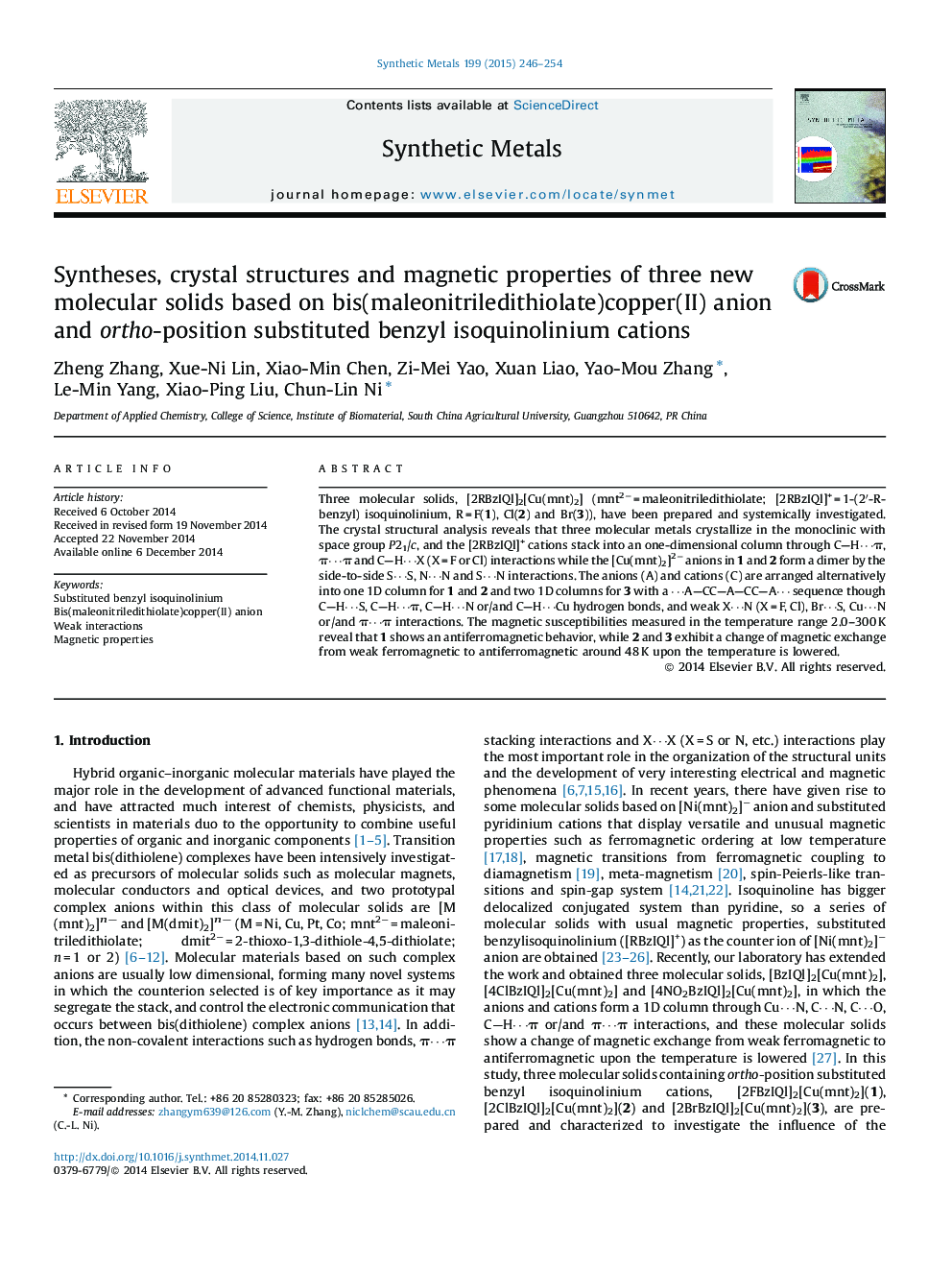| کد مقاله | کد نشریه | سال انتشار | مقاله انگلیسی | نسخه تمام متن |
|---|---|---|---|---|
| 1440798 | 1509378 | 2015 | 9 صفحه PDF | دانلود رایگان |

• Three molecular solids containing [Cu(mnt)2]2− dianion were prepared and characterized.
• The [Cu(mnt)2]2− anions in 1 and 2 form a dimer by the side-to-side S⋯S, N⋯N and S⋯N interactions.
• There are non-classical hydrogen bonds, X⋯N (X = F, Cl), Br⋯S, Cu⋯N and π⋯π interactions.
• There exists an antiferromagnetic interaction in 1.
• A change of magnetic exchange from weak ferromagnetic to antiferromagnetic exists in 2 and 3.
Three molecular solids, [2RBzIQl]2[Cu(mnt)2] (mnt2− = maleonitriledithiolate; [2RBzIQl]+ = 1-(2′-R-benzyl) isoquinolinium, R = F(1), Cl(2) and Br(3)), have been prepared and systemically investigated. The crystal structural analysis reveals that three molecular metals crystallize in the monoclinic with space group P21/c, and the [2RBzIQl]+ cations stack into an one-dimensional column through CH⋯π, π⋯π and CH⋯X (X = F or Cl) interactions while the [Cu(mnt)2]2− anions in 1 and 2 form a dimer by the side-to-side S⋯S, N⋯N and S⋯N interactions. The anions (A) and cations (C) are arranged alternatively into one 1D column for 1 and 2 and two 1D columns for 3 with a ⋯ACCACCA⋯ sequence though CH⋯S, CH⋯π, CH⋯N or/and CH⋯Cu hydrogen bonds, and weak X⋯N (X = F, Cl), Br⋯S, Cu⋯N or/and π⋯π interactions. The magnetic susceptibilities measured in the temperature range 2.0–300 K reveal that 1 shows an antiferromagnetic behavior, while 2 and 3 exhibit a change of magnetic exchange from weak ferromagnetic to antiferromagnetic around 48 K upon the temperature is lowered.
Figure optionsDownload as PowerPoint slide
Journal: Synthetic Metals - Volume 199, January 2015, Pages 246–254